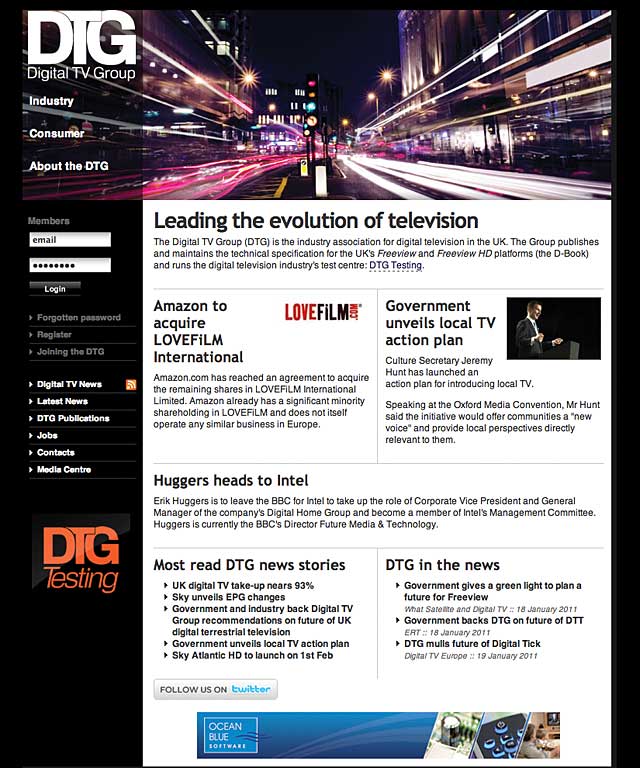The State of Digital Television (DTV) in Europe
After a period of strong sales, which saw LCD and plasma television sales exhibit annual growth of more than 20% for 3 solid years, sales of televisions in 2010 dropped to only 2.9% annual growth.
“To counter this, TV makers are trying to persuade consumers to buy new sets by promoting new technologies,” The New York Times article continued. “[E]very TV maker [at CES] will be crowing about things like 3-D and Internet connections—features that have not generated much excitement so far.”
While the emergence of consumer-friendly pricing of plasma and LCD HDTVs matched the government’s mandate to move to digital broadcasting, there’s no compelling reason in the U.S. to buy an internet-connected television.
Having said that, though, the staggered analogue cutoff dates across Europe may foreshadow a rise in sales of internet-connected televisions, since these features are now standard in most flat-panel displays. In other words, Europe may have a stronger lead in the integration of web video on the television than the U.S. market, at least for the foreseeable future, as U.S. consumers tend to hold on to a television for 6–8 years.
The technology advances around YouView, formerly Project Canvas, may find their way into the television set itself before the U.K. analogue cutoff, which is currently scheduled for 2012.
“We’re moving towards a time where the only distinction between video consumption on the desktop and the television is the size of the screen,” said Anthony Rose, former CTO of YouView, at the 2010 Streaming Media Europe conference.
Still, given the nature of the rolling analogue conversions in the U.K., which started in 2010 and continue through 2012, the Freeview broadcaster faces the challenge of staggered technology in homes across the U.K.: it’s quite possible that some of the less populous parts of the country may end up with a better telly in the lounge, strictly due to the timing of the cutoff.
For those who may not be able to afford the new televisions, the U.K. government has a help scheme.
“TV is going digital all over the UK,” the website for the Digital Switchover Help Scheme states, “and the traditional TV signal will be switched off in your area. This means that if you haven’t got digital TV already, you will lose your current TV service. The Help Scheme is here to make sure your TV set will work with digital.”
The scheme will help convert TVs to digital for the elderly (aged 75 or older), those on particular allowances (Disability Living, Attendance, Constant Attendance), mobility supplement, the registered blind or partially sighted, or someone who has lived in a care home for 6 months or more. It is estimated the scheme may help up to 8 million people convert to digital TV.
Will TV Viewing Fall Off?
This question was a bit of a nonissue in the U.S., given the fact that internet broadcasts weren’t really up to snuff when the analogue cutoff deadline occurred. But it is an issue that’s been watched closely, and an early 2011 report says that Turner Broadcasting is seeing only a slight decline in total TV viewing.
“We often talk about the internet version and the TV version of a large event,” Rose said during his Streaming Media keynote. “But consider this: Britain’s final showing in the World Cup was available on television, but we had more than 800,000 simultaneous streams or 430Gbps for just one game. With the 2012 London Olympics, we may see the first time that the event is equally viewed online within our market in terms of hours of viewing for all the various events.”

The DTV Group is made up of more than 150 content providers, technology companies, and others working together to ensure compliance and interoperability in the DTV transfer in the U.K.